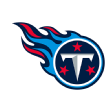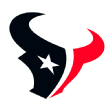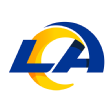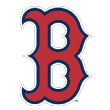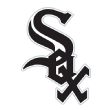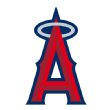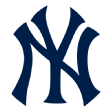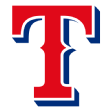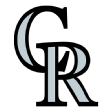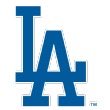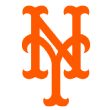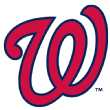
1. Arizona Cardinals
Nick Bosa, DE, Ohio State*
With Kliff Kingsbury and Vance Joseph looking to bring back the 3-4 defensive scheme to the desert, look no further than the Chargers' use of Joey Bosa for a glance at how his younger brother would fit with the Cardinals. Expect Nick to play defensive end but also get some snaps standing up on the edge. Either way, Bosa will collect offensive tackles using his length, speed and power. He could get double-digit sacks as a rookie.
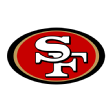
2. San Francisco 49ers
Josh Allen, OLB, Kentucky
The Niners really want an edge rusher after only DeForest Buckner cracked six sacks for them in 2018 (Buckner had 12). Allen blew up offensive linemen all season en route to 17 sacks and 21.5 tackles for loss for the Wildcats. With his big 6-foot-5, 260-pound frame, Allen could line up as a defensive end in the 49ers' 4-3 scheme if he tacks on some more weight.

3. New York Jets
Rashan Gary, DE, Michigan*
Henry Anderson is a free agent, and Leonard Williams has one year left on his contract, so defensive end is a need for Gang Green. Gary has good size (6-foot-5, 283 pounds) and athleticism with an explosive closing burst.

4. Oakland Raiders
Quinnen Williams, DT, Alabama*
Williams just makes sense for the Raiders. Oakland hobbled to just 13 total sacks in 2018 after trading away Khalil Mack. As one of the two most talented prospects in this class, Williams would make an immediate impact with his quick first step and penchant for dropping guys in the backfield. Let's start the rebuild with an elite prospect.

5. Tampa Bay Buccaneers
Jonah Williams, OT, Alabama*
Williams is a plug-and-play prospect who would fill the void left by free agent Donovan Smith. He can handle speed rushes off the edge with quick feet and would help buy some time for Jameis Winston. However, I'd look for Tampa Bay to trade back and simply take the best offensive lineman available, with the likes of Jacksonville and Miami looking to move up to grab a QB.

6. New York Giants
Dwayne Haskins, QB, Ohio State*
Imagine this big-armed signal-caller uncorking shots to Odell Beckham Jr. or finding Saquon Barkley in the flat. Sound fun? The one-year Buckeyes starter shows good touch and anticipation, and could be Big Blue's quarterback of the future. It makes perfect sense here, as long as another quarterback-hungry team doesn't hop the Giants via a trade.
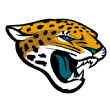
7. Jacksonville Jaguars
Jeffery Simmons, DT, Mississippi State*
This is a tough call if the Jags don't trade up for Haskins, and it would be their second straight year of using a first-round pick on a defensive tackle (Taven Bryan). Simmons would be a good addition if Malik Jackson and Marcell Dareus are cut. There's no denying Simmons' leverage at the line and his range, and he'd fit nicely in Jacksonville's one-gap-heavy scheme. Tom Coughlin and Doug Marrone would have to be OK with his character history.

8. Detroit Lions
Greedy Williams, CB, LSU*
Detroit needs an edge rusher with Ezekiel Ansah likely headed out of town, and the Lions would love to add a solid tight end, but Williams is the best need-value match at No. 8. The Lions tied for second-fewest interceptions in the league with seven, and the tall LSU corner has the closing speed to bait quarterbacks and then pounce on their mistakes. Motor City hasn't gone cornerback in the first round since Terry Fair in 1998.

9. Buffalo Bills
Jawaan Taylor, OT, Florida*
The Bills need to protect Josh Allen, and Taylor is mobile and powerful with good size. He can ride faster rushers past the QB with his quickness, allowing Allen time to find a receiver deep (yeah, Buffalo needs one of those too) or take off. With Dion Dawkins at left tackle and the majority of Taylor's experience coming on the right side, the Florida alum would replace Jordan Mills at right tackle.

10. Denver Broncos
Deandre Baker, CB, Georgia
Denver could trade up for a quarterback or take the dive here for Kyler Murray or Drew Lock, but this secondary is hurting as well. Aqib Talib is long gone, and Chris Harris Jr. fractured his fibula in December. What's more, Bradley Roby is a free agent. Baker is the most instinctive corner in the class.

11. Cincinnati Bengals
Cody Ford, OT, Oklahoma*
Devin White is a potential selection here, too. But right tackle is a glaring hole, and Ford is a big, nasty finisher. He's overpowering at the point of attack and can control defenders in setting up the Joe Mixon run game. Plus, he comes with the versatility to play either right tackle or right guard at the next level.
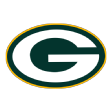
12. Green Bay Packers
Devin White, ILB, LSU*
Green Bay would probably want an edge rusher here, but the value is just off the charts for White. I envision him becoming the future leader of the defense as a three-down rangy backer who moves with explosiveness. And with the Saints' pick on the back end of the round, the Packers can still get their pass-rusher.

13. Miami Dolphins
Kyler Murray, QB, Oklahoma*
Yes, the risk is apparent -- Murray is undersized at 5-foot-10 and still hasn't decided on his baseball career. But he has an electric arm and some of the best athleticism I've seen at the position in years. New offensive coordinator Chad O'Shea would have a real talent to develop at quarterback if Miami moves on from the Ryan Tannehill era.

14. Atlanta Falcons
Ed Oliver, DT, Houston*
If Atlanta is able to lock up free agent Grady Jarrett, Dexter Lawrence could also be an option. But even as Oliver slides down draft boards, his ability to be disruptive and burst out of his stance is fun to watch. The Falcons were in the bottom five in run defense last season.




